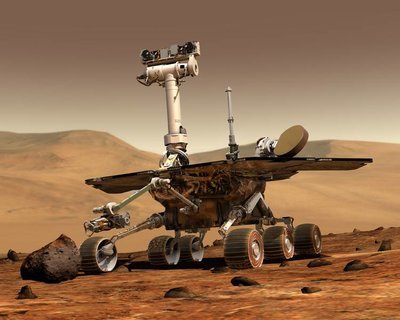The Moon and Mars
Station 8

A few months after the first manned moon landing in July 1969, NASA gave the MPI for Chemistry around 100 grams of moon dust collected on the Apollo mission. The research was headed by Friedrich Begemann and Heinrich Wänke. Wänke was a student of Friedrich Paneth, who pioneered cosmochemistry at the Institute.
At the heart of the Mainz studies were two questions: how was the moon created?, and is it made of bedrock, indicating a common origin with the Earth? The fact that the moon and the Earth’s mantle are very similar in terms of their chemical composition would sug-gest this, but some questions as to how the moon formed remain unanswered.
This video "Der Mond kommt nach Mainz" shows the arrivel of the moon dust at the MPI for Chemistry.
Wänke and his colleagues analyzed sample material from all subsequent Apollo missions as well. They also conducted research into meteorites from the moon and, later, from Mars. Wänke championed the first mission to Mars with the hope of gaining direct access to rock samples. In the 1990s the Institute developed spectrometers for a Mars vehicle in order to study the chemical composition of the rocks and soil of the red planet.

The Alpha X-ray Spectrometer (APXS), on board the Mars rover Opportunity since 2004, delivered key evidence that water once existed on Mars.

